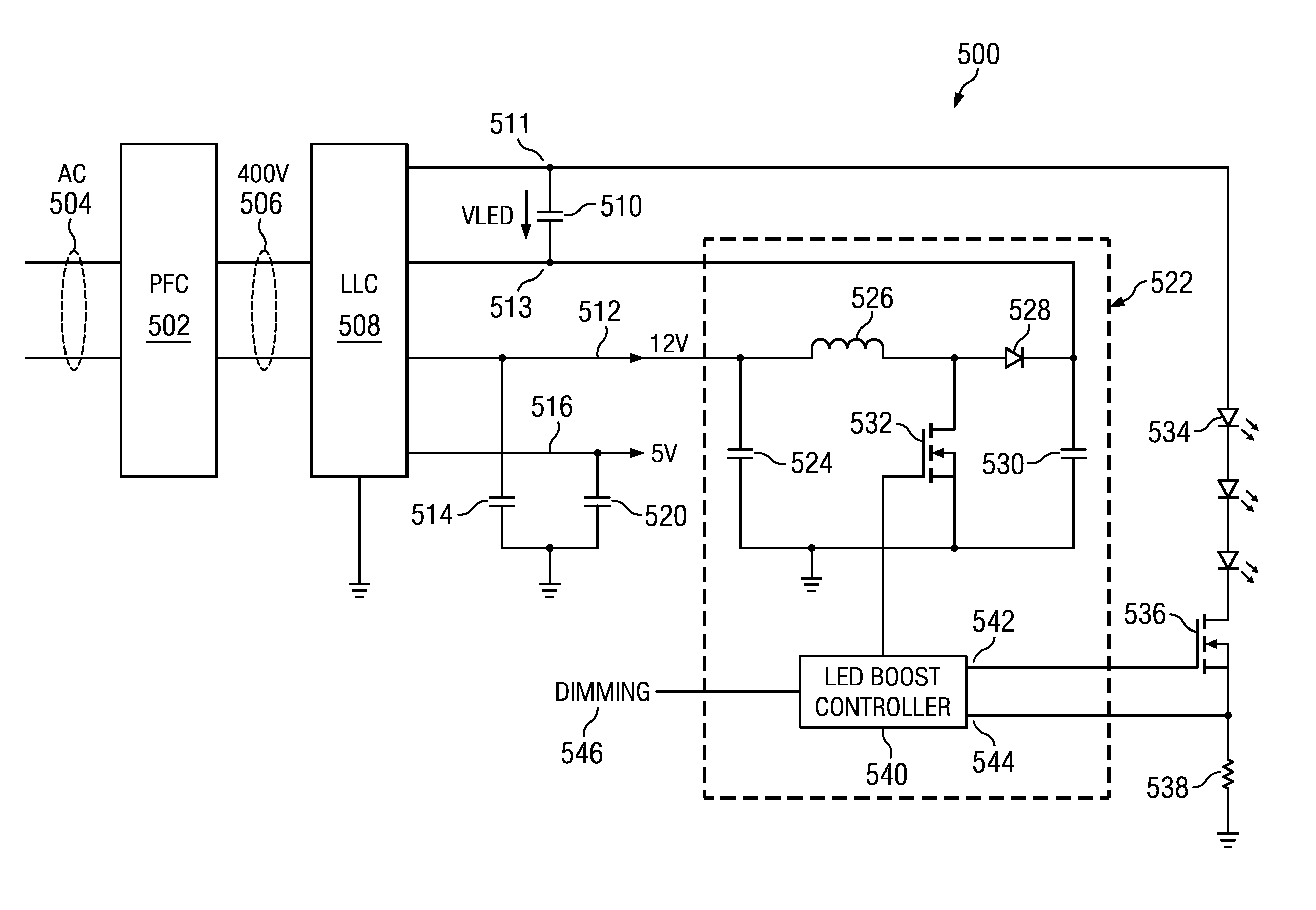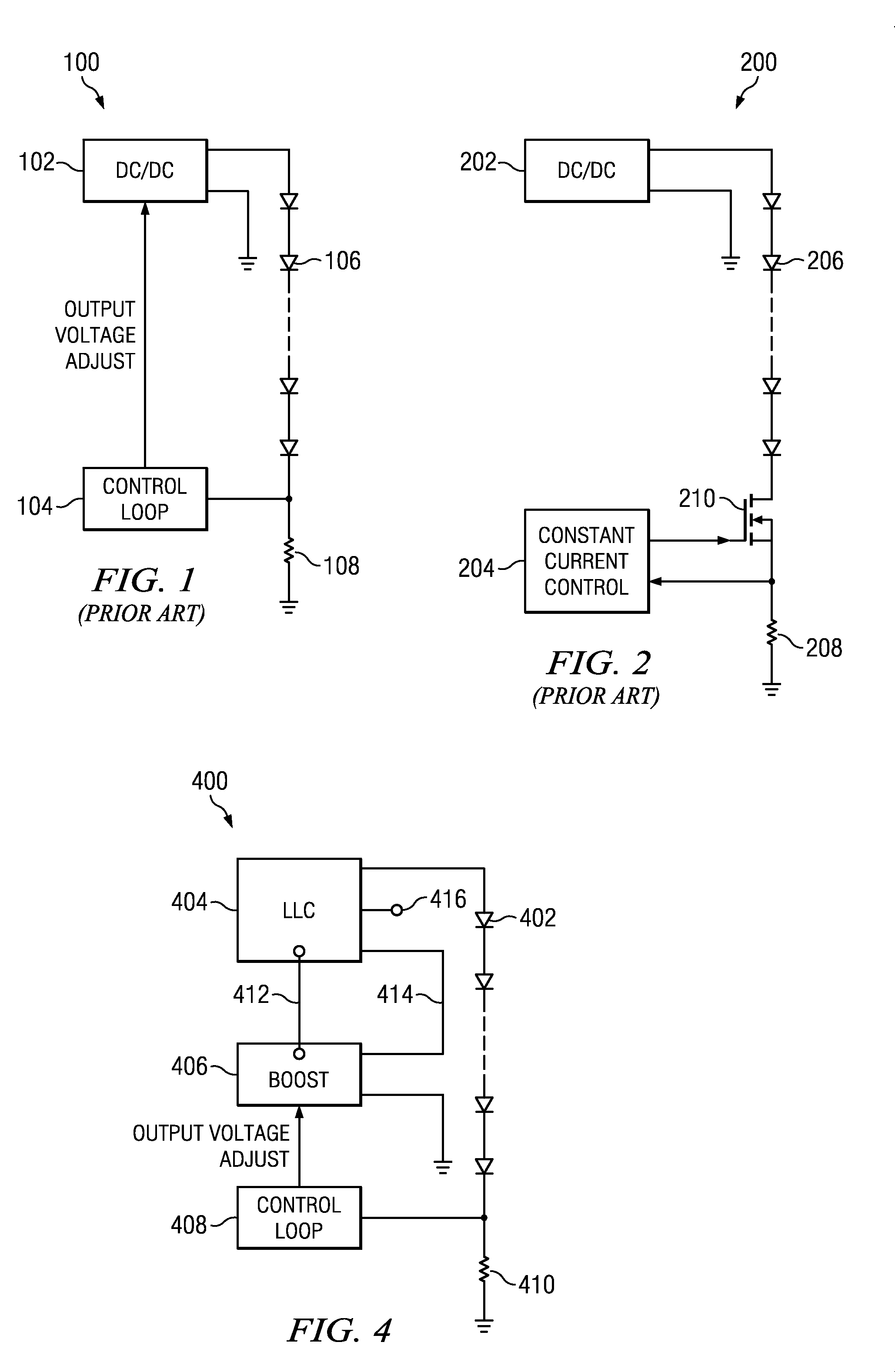LED driver with boost converter current control
a technology of current control and driver, applied in the direction of ac network voltage adjustment, instruments, optics, etc., can solve the problems of wasting power, unable to supply a constant voltage across the string, and less efficient method than the circui
- Summary
- Abstract
- Description
- Claims
- Application Information
AI Technical Summary
Benefits of technology
Problems solved by technology
Method used
Image
Examples
Embodiment Construction
[0018]FIG. 4 shows a simplified block diagram of a first embodiment of the present invention, generally as 400. In FIG. 4, the LLC DC-DC converter 404 provides an output to operate the series string of LEDs 402. A resistor 410 is in series with the LEDs 402 and provides a voltage proportional to the current through the LEDs. A boost DC-DC converter 406 is coupled to receive an input voltage 412 which is one of the plurality of outputs 412, 416 from the DC-DC converter 404, and which are at a much lower voltage than that provided to the LED string 402. The optional auxiliary output 416 can be used to drive other circuitry, such as an audio amplifier, for example. The boost converter 406 provides an output at 414 which adds to the output voltage of the DC-DC converter 404 to provide the voltage for LED string 402. This additional voltage is used to control the current through the LED string 402. The voltage received by the boost converter 406 through input 412 is referred to ground. A...
PUM
| Property | Measurement | Unit |
|---|---|---|
| voltage | aaaaa | aaaaa |
| voltages | aaaaa | aaaaa |
| current | aaaaa | aaaaa |
Abstract
Description
Claims
Application Information
 Login to View More
Login to View More - R&D
- Intellectual Property
- Life Sciences
- Materials
- Tech Scout
- Unparalleled Data Quality
- Higher Quality Content
- 60% Fewer Hallucinations
Browse by: Latest US Patents, China's latest patents, Technical Efficacy Thesaurus, Application Domain, Technology Topic, Popular Technical Reports.
© 2025 PatSnap. All rights reserved.Legal|Privacy policy|Modern Slavery Act Transparency Statement|Sitemap|About US| Contact US: help@patsnap.com



